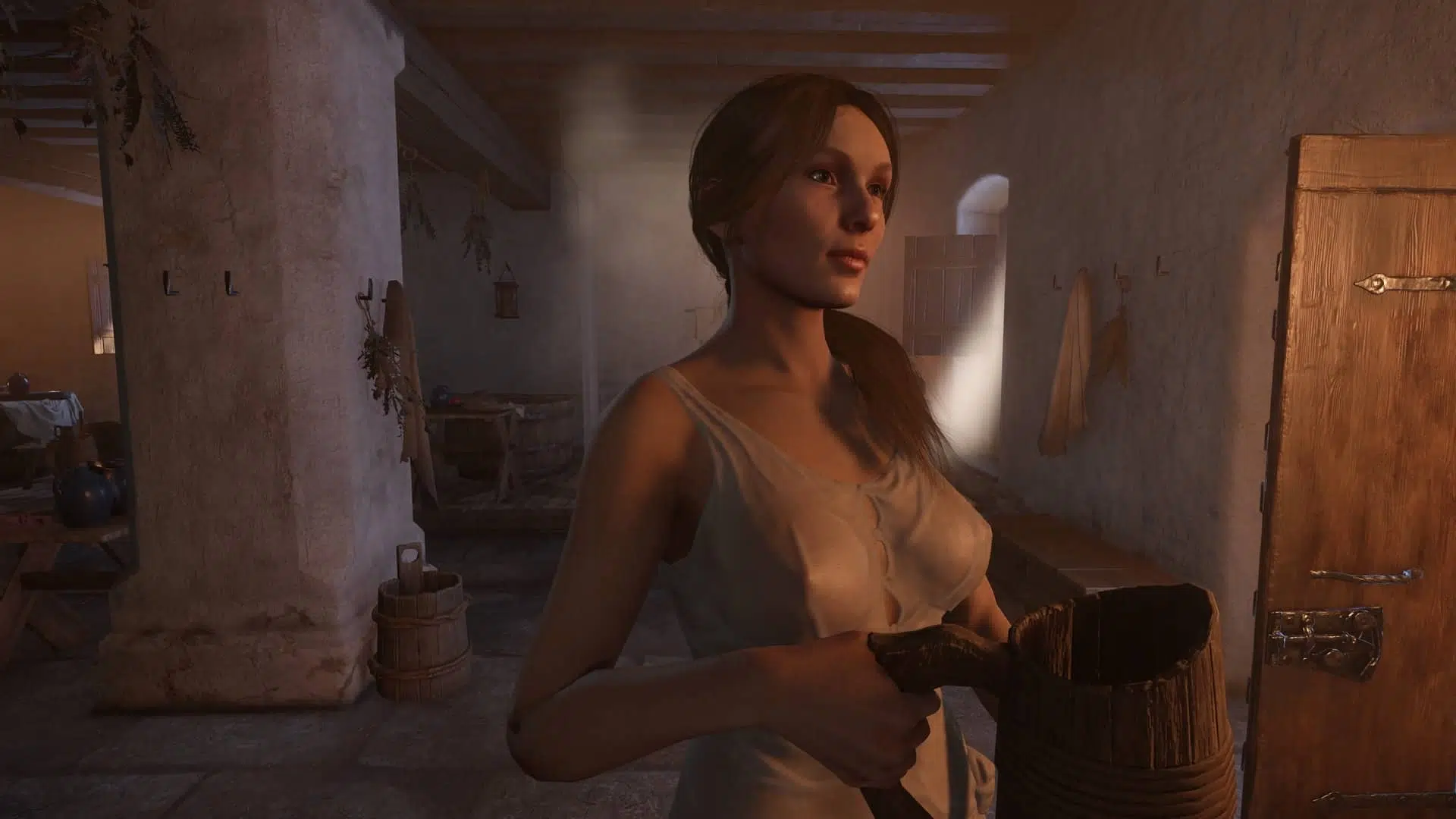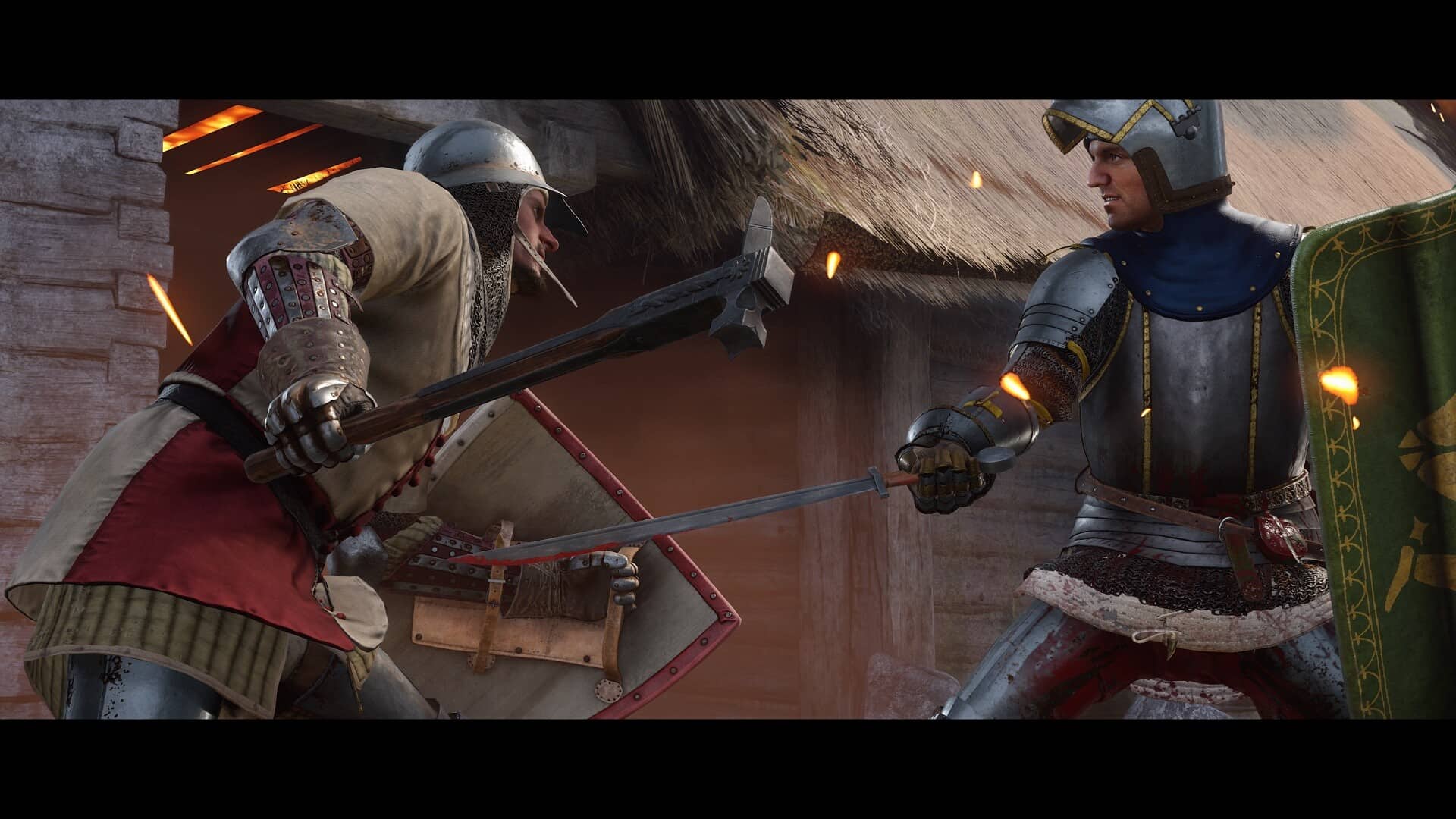Estimated reading time: 6 minutes
I already shared a detailed review of Kingdom Come: Deliverance 2, focusing on its storytelling, visuals, and overall medieval atmosphere. This time, I want to dive deeper into one aspect that blew me away by accident would say: the controller haptic feedback on the PlayStation version. I tested practically every basic haptic feature I could find, and I have to say it’s quite impressive.
Alchemy: Feeling the Medieval Craft
One of the first things I tried was alchemy. As soon as I started crushing herbs in the mortar, I felt a distinct friction right in my DualSense controller. It was surprisingly immersive—like I could sense the medieval craft in my own hands. When stoking the fire with the bellows, there’s another subtle vibration, imitating the rhythmic push of air into the flames. Similarly, raising and lowering the cauldron produces noticeable haptics shifts, making the entire alchemy process feel delightfully hands-on.
Close Combat: Steel on Steel
Close combat is where haptics shine. Every sword strike has a distinct vibration pattern, creating a satisfying jolt each time blades connect. More interestingly, as your stamina decreases, the adaptive triggers demand increasing force. It’s like you feel Jindra’s (the main character’s) fatigue in your own fingers, reinforcing the importance of managing your energy in battle. Heavier weapons such as the mace make the triggers feel stiffer, while blocking with a shield registers as a solid impact you can’t ignore.
Ranged Weapons: Crossbows vs. Bows
I also spent time experimenting with crossbows and bows to see how differently they’d register on the controller. With the crossbow, you feel that moment you draw back the string—your hand shakes more and more as stamina drains, and the weapon’s trembling becomes more pronounced. Even sliding the bolt into place is perceptible, adding a nice little detail. Pressing the trigger to fire is accompanied by a sharp click that feels very believable.
In contrast, the bow’s adaptive trigger feels tense the entire time you draw the string. I have to hold the trigger firmly, and the bow’s trembling intensifies as my stamina dips. Releasing an arrow has a distinctly different sensation than the crossbow’s “click.” Instead, it’s like a pulse swiping from one side of the controller to the other, evoking the feeling of letting the bowstring slip from my fingers.
Horse Riding: Hooves and Impact
Riding my horse around medieval Bohemia has never felt so alive. I can feel every hoofbeat in the controller, and braking the horse delivers a tangible drag. The pulses vary depending on the horse’s gait or if I get knocked off—landing on the ground sends a strong jolt right into my palms. There’s also a faint sensation of having my feet in the stirrups. It’s subtle, but I sense it on each side, almost like I’m gently nudging the horse forward.
Thievery: Quiet Steps and Lockpicks
Stealth is a big part of Kingdom Come: Deliverance 2, and haptics enhance that aspect too. If I open a door carefully, the vibrations are subdued, mirroring the tension of trying not to make a sound. When I’m crouched and moving slowly, I barely feel my footsteps. Conversely, if I sprint around, the vibrations grow stronger with each footfall—making me acutely aware I’m no longer sneaking.
Lockpicking is equally nuanced. The more I stray from the sweet spot, the louder the lock “squeaks” in my hands, with an increased vibrating force. Once I finally crack the lock, there’s a satisfying click felt through the PlayStatiopn DualSense controller. It’s a minor detail, but it dramatically raises the stakes when you’re trying to stay unnoticed.
Blacksmithing: Every Hammer Strike
Last but not least is the blacksmithing minigame. Swinging the hammer feels varied based on how well I strike the workpiece. A correct strike registers as a firm, robust jolt. Hitting the anvil beside the horseshoe, however, results in a weaker vibration that signals my off-target swing. Every blow produces a unique feedback, reflecting how good or bad my hammer work is. Even stirring the forge or adjusting the metal can produce small but distinct pulses.
A New Level of Medieval Feeling
Altogether, these haptic features make every action feel more immediate and authentic—from crushing herbs in alchemy to hammering metal at the forge. I considered them an intriguing footnote in my original review, but once I dug deeper, I realized they deserve this standalone spotlight. It’s astonishing how much dimension these haptics add to the medieval CZ setting of Kingdom Come: Deliverance 2, especially if you’re playing on PlayStation.
I still marvel at how different weapon handling feels thanks to adaptive triggers, or how thoroughly I’m drawn into the act of riding a horse through muddy roads and dense forests. Even sneaking around back alleys or picking locks in dimly lit corridors gains a brand-new layer of tension when your controller echoes every tiny slip.
If you’re a fan of the original Kingdom Come, or you enjoy historically grounded RPGs that push immersion, these refined haptics are a legitimate selling point. They offer a tangible connection between you and Jindra’s world, letting you practically feel the clink of steel and the strain of drawn bowstrings. For me, this adds an unforgettable dimension to an already solid experience. If you haven’t checked it out yet, consider this your invitation to immerse yourself in the next level of medieval warfare, crafting, and sneaking around. You might discover that the line between you and the game world gets pleasantly blurred.












